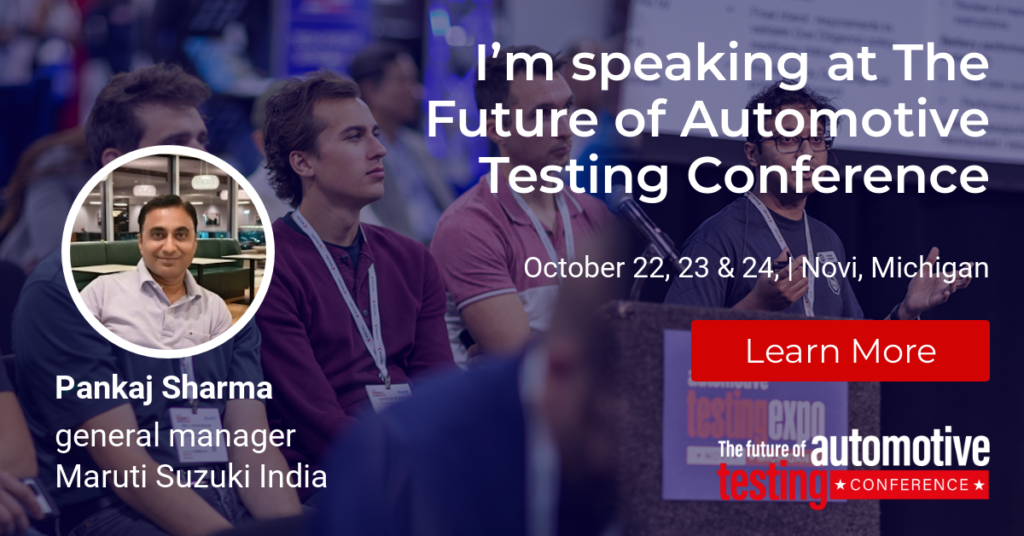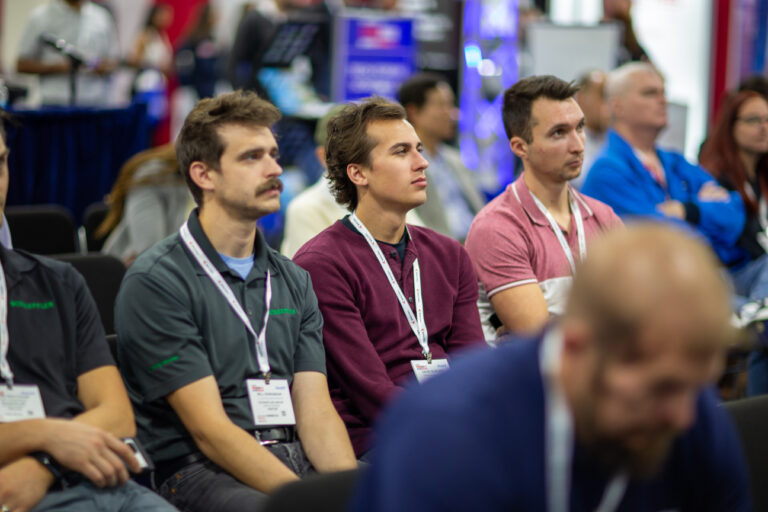This year’s Automotive Testing Expo North America in Novi, Michigan (October 22, 23 & 24), will provide insightful discussions on the industry’s most pertinent topics to advance and accelerate development in the industry. One such presentation at the inaugural Future of Automotive Testing Conference will be from Pankaj Sharma, general manager at Maruti Suzuki, who will speak about concurrent durability vehicle testing at component level (Day 2). Here, he tells ATTI more.
Tell us about your role at Maruti Suzuki
I head up the new model vehicle development division in Maruti Suzuki India (MSIL), a subsidiary of Suzuki Motor Corporation Japan and the largest car maker in India. I have been associated with MSIL for the last 23 years. Throughout this time, I have seen the evolution of our testing standards from testing basic vehicles to now testing on varied upcoming new technologies for the automotive world. In this journey, we are constantly striving to push the envelope by working on new technologies in new model development testing to make it more robust while keeping customer centric requirements. I am honored to get an opportunity to share some details of our innovation at Automotive Testing Expo.
Why did you decide to speak on concurrent durability vehicle testing at component level?
The automotive industry is facing increasing pressure to shorten development cycles, meet stricter regulatory requirements and deliver higher quality vehicles – all while controlling costs. Traditional, sequential testing methods no longer align with these demands. Concurrent testing, however, addresses these challenges head-on by allowing us to test multiple components simultaneously in real-world conditions, leading to faster, more reliable results.
This approach directly benefits not just manufacturers but the entire automotive ecosystem – from OEMs who will see reduced development times, to suppliers who can streamline their parts validation processes and even end consumers who will enjoy more reliable and better-performing vehicles. Everyone stands to gain. The innovations we will discuss are designed to push the entire industry forward, making vehicle development more efficient and sustainable in the long run.
By bringing these benefits to the forefront, we hope to encourage other industry players to adopt similar methodologies and to collaborate on setting new benchmarks for testing standards. The goal is to help the industry remain competitive while maintaining high standards of safety, durability and performance in the vehicles we all depend on.
 What are the benefits of transitioning from a traditional, methodical approach to concurrent testing?
What are the benefits of transitioning from a traditional, methodical approach to concurrent testing?
The benefits are profound. By reducing the number of individual testing cycles, concurrent testing slashes development test time by up to 40%, enabling manufacturers to bring vehicles to market much faster. In a competitive industry, where innovation and time-to-market are crucial, this gives auto makers a significant edge.
As the use of technology in vehicles increases, each OEM needs to unlearn, relearn and reinvent themselves in the process of new model development. There should be a constant search to reduce the development timelines in each aspect of new model development.
The concurrent testing approach gives a new perspective in testing the durability of components, which helps in reducing the overall test duration in the development phase. Of course, a focused group with a list of activities is needed to implement the concurrent testing efficiently. Also, the approach enables the use of resources such as prototype vehicles, testing equipment and personnel to be optimized.
Above all, testing components together helps evaluate how they interact and perform as part of the vehicle’s overall system. This provides valuable insights into the interdependencies of vehicle components that cannot be captured in isolation.
How big a step change does the implementation of such a system represent?
The shift from traditional, sequential testing to concurrent testing is nothing short of revolutionary in the automotive industry. Traditionally, testing has been done in a very methodical, step-by-step manner. While this approach ensured thorough testing, it came at the cost of significant time and resources.
Now, with concurrent testing, we’re able to test multiple components simultaneously within a single vehicle. For instance, we can now assess how a power window, door hinge and gearshift work – together, in real time. This is a game-changer because vehicles are complex systems; the performance of one component can often influence another. Testing them together gives engineers a much clearer picture of how these interactions play out in practice so that potential issues can be identified before they arise. It’s more in line with how consumers actually use their vehicles – components don’t operate in isolation in real life. The concurrent testing approach allows us to simulate those real-world conditions far earlier in the development process, which leads to a more accurate understanding of a vehicle’s overall durability and performance.
This paradigm shift is about rethinking how we approach vehicle development from a systems perspective rather than focusing narrowly on individual components. It’s more efficient, more accurate, and it allows manufacturers to respond to the market faster – all the while delivering vehicles that are better tuned to real-world driving conditions. It’s a bold step forward for the automotive industry and sets a new standard for vehicle testing in the 21st century.
How can concurrent testing be applied?
This approach isn’t just theoretical – it’s already delivering real-world results. Concurrent testing can be applied to advanced driver assistance systems (ADAS) and cybersecurity functions, further expanding its reach. This demonstrates the scalability of the methodology, making it adaptable not just to mechanical components but also to cutting-edge vehicle technologies. The framework allows us to continuously refine the process, keeping up with the rapid pace of innovation in the automotive industry, including the growing emphasis on electric vehicles and autonomous driving.
Find out more about the conference or register for FREE exhibition entry on the website
Read more about this in the November edition of ATTI’. 


